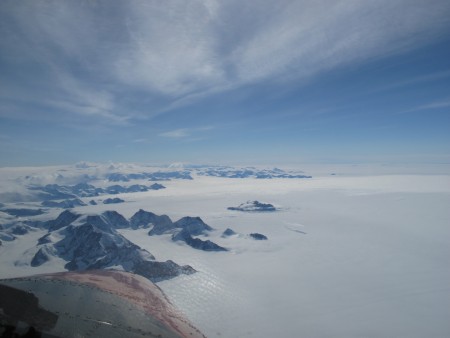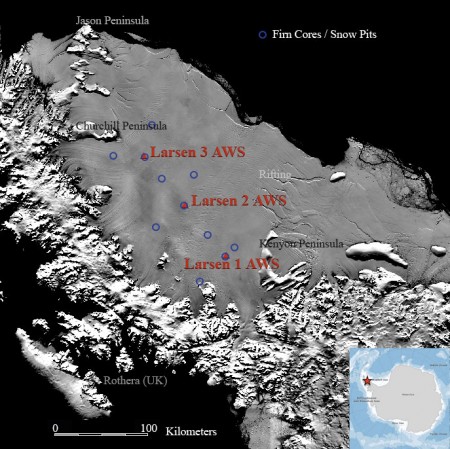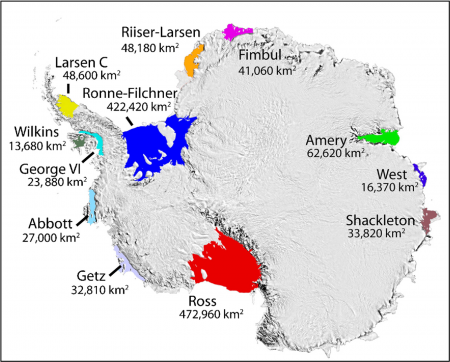May 20, 2015 – An Antarctic ice shelf located on the continent’s peninsula that juts northward towards South America is expected to collapse into the Southern Ocean possibly within the next few decades. Called Larsen C, named after a Norwegian whaling captain who explored the area in 1893, this ice sheet follows its predecessors, Larsen A and B which both collapsed in 1995 and 2002 respectively.
When you look at the picture below it is hard to imagine that in this environment anything could change. But the tens of thousands of years of accumulation of snow and ice that created Larsen C may be coming to an end.
The latest research done by the British Antarctic Survey combines satellite and radar telemetry from multiple installations on the ice surface and indicates Larsen C has lost 4 meters (over 13 feet) of ice thickness and seen its surface sink by one meter (39 plus inches) between 1998 and 2012. The erosion of the ice is not just happening because of a warming atmosphere which has increased 2.8 Celsius (5 Fahrenheit) degrees over the last five decades, but also from a warming ocean invading beneath the ice shelf.
Larsen C covers 48,600 square kilometers (18,765 square miles) and reaches a thickness of 350 meters (approximately 1,150 feet) on average. it is bigger than the states of Connecticut and Rhode Island combined, and yet as Antarctic ice shelves go (based on what you see on the map below), is far from being the biggest.
The British study entitled, Oceanic and atmospheric forcing of Larsen C Ice-Shelf thinning, which appears in the science journal, The Cryosphere, indicates a growing crack through the entire shelf. Combined with the undermining by a warmer ocean and thinning of the ice volume the shelf may soon float above a subsea ridge that currently acts as a dam to hold it in place. When that happens and not if, researchers forecast a significant calving event with as much as 12% of the shelf plunging into the ocean. That will be far more spectacular than what was witnessed with the earlier collapses of Larsen A and B. And if the entire ice shelf collapses within the next few decades estimates are that it will add about 10 centimeters (3.93 inches) to global ocean sea levels. Although that may not sound like much, for low lying coastal communities it could be the difference between staying dry or being inundated. Combined with accelerated melting from Greenland and other Antarctic ice sheets and describing it as “the tip of the ice berg” seems apt.
For those who are climate change skeptics, weather stations in March of this year reported the highest daytime temperature ever recorded on the Antarctic Peninsula. The site – Argentina’s Marambio Base, an islet off the coast. The reading – 17.5 Celsius (63.5 Fahrenheit) degrees. That temperature was recorded at the end of the Antarctic summer and surpassed the previous record dating back to 1961. Yes, it’s only weather and weather is not the same as climate change, but when you combine it with the evidence of ice shelf thinning on the Peninsula’s largest remaining ice shelf, it is not hard to connect the dots.













